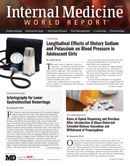Publication
Article
Internal Medicine World Report
No Association Found Between Extra Time on MCAT, Medical School Admission
Author(s):
For medical school hopefuls, a JAMA study has found those awarded extra time on the Medical College Admission Test (MCAT), may not have affected their admissions, but still had lower United States Medical Licensing Examination (USMLE) Step exam scores and 4-8 year graduation rates.

For medical school hopefuls, a JAMA study has found those awarded extra time on the Medical College Admission Test (MCAT), may not have affected their admissions, but still had lower United States Medical Licensing Examination (USMLE) Step exam scores and 4-8 year graduation rates.
Researchers from Association of American Medical Colleges in Washington, DC and Human Resources Research Organization in Virginia investigated the acceptance, graduation, and USMLE pass rates to decipher whether time accommodations during the MCAT impacted these factors.
Using more than 200,000 and 1,000 MCAT scores of students given regular and extended time, respectively, they found no notable difference between their test scores in all categories (total: 29.7 vs. 29.5;mean difference, 0.23 [95% CI, −0.17 to 0.62]; P = .26; d = 0.05; Biological Sciences: 10.2 vs. 10.2; mean difference, 0.06 [95% CI, −0.09 to 0.21]; P = .46; d = 0.00; Physical Sciences: 10.0 vs. 10.0; mean difference, 0.02 [95% CI, −0.16 to 0.21]; P = .85; d = 0.00; Verbal Reasoning: 9.6 vs. 9.4; mean difference, 0.14 [95% CI, −0.02 to 0.31]; P = .08; d = 0.11).
However, the team did identify several aspects where extra time on the MCAT did affect performance. For example, students who utilized additional time had lower first time SMLE pass rates (Step 1, 82.1% [344/419] vs. 94.0% [70 188/74 668]; difference, 11.9% [95% CI, 9.6% to 14.2%]; Step 2 CK, 85.5% [349/408] vs. 95.4% [70 476/73 866]; difference, 9.9% [95% CI, 7.8% to 11.9%]; Step 2 CS, 92.0% [288/313] vs. 97.0% [60 039/61 882]; difference, 5.0% [95% CI, 3.1% to 6.9%]).
Furthermore, extra time was linked to significantly lower undergraduate grade point averages (UGPAs) (3.61 vs. 3.44; mean difference, 0.17 [95% CI, 0.14 to 0.20]; P < .001; d = 0.59), and lower graduation rates within 4 (67.2% (285/424) vs. 86.1% (60 547/70 305) (difference, 18.9% [95% CI, 15.6% to 22.2%]; P < .001;h = 0.46), 5 (81.6% (346/424) vs. 94.4% (66 369/70 305) (difference, 12.8% [95% CI, 10.6% to 15.0%]; P < .001; h = 0.41), 6 (85.4% [362/424] vs. 95.8% [67 351/70 305]; difference, 10.4% [95% CI, 8.5% to 12.4%]), 7 (88.0% [373/424] vs. 96.2% [67 639/70 305]; difference, 8.2% [95% CI, 6.4% to 10.1%]), and 8 years (88.4% [375/424] vs. 96.5% [67 847/70 305]; difference, 8.1% [95% CI, 6.3% to 9.8%]).
“More than 10% (45/424) of students who tested with extra time did not graduate within the time frame of the study, compared with approximately 3% (2320/70 305) of students who tested with standard time (difference, 7.3% [95% CI, 5.6% to 9.0%]; P < .001; h = −0.30),” the authors wrote.
In light of their findings, the team recommended more research to ensure success among students needing extra test time.






